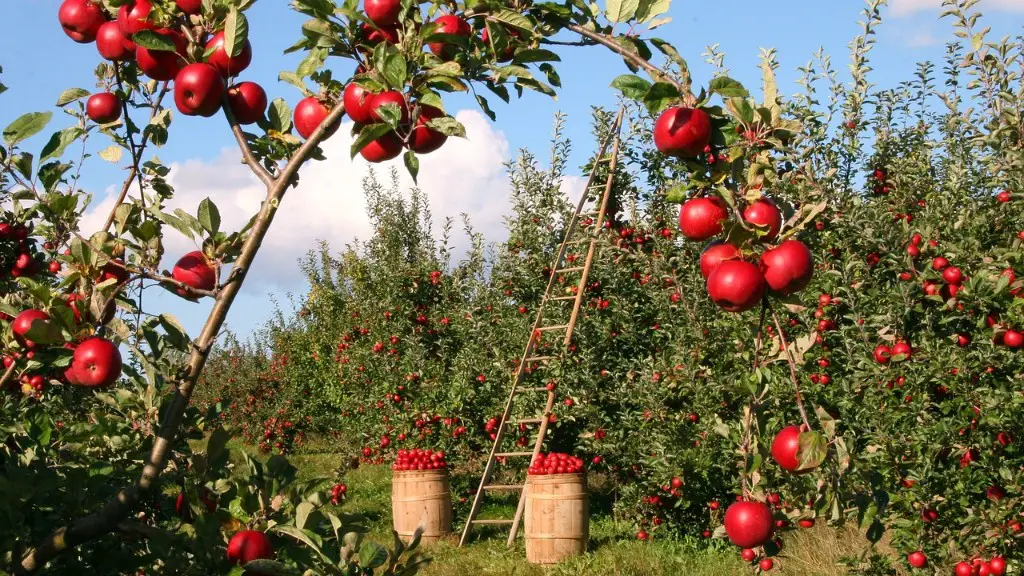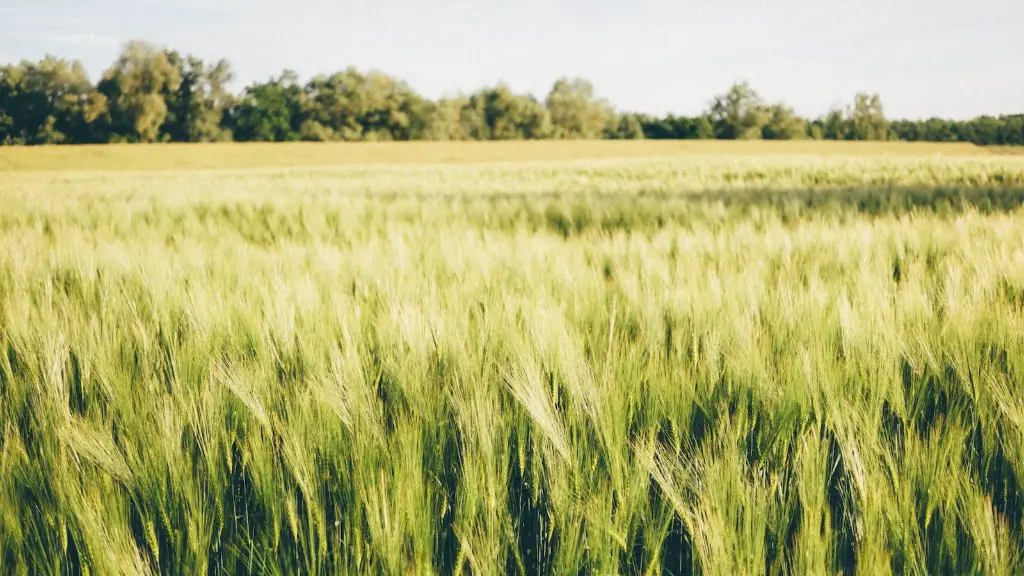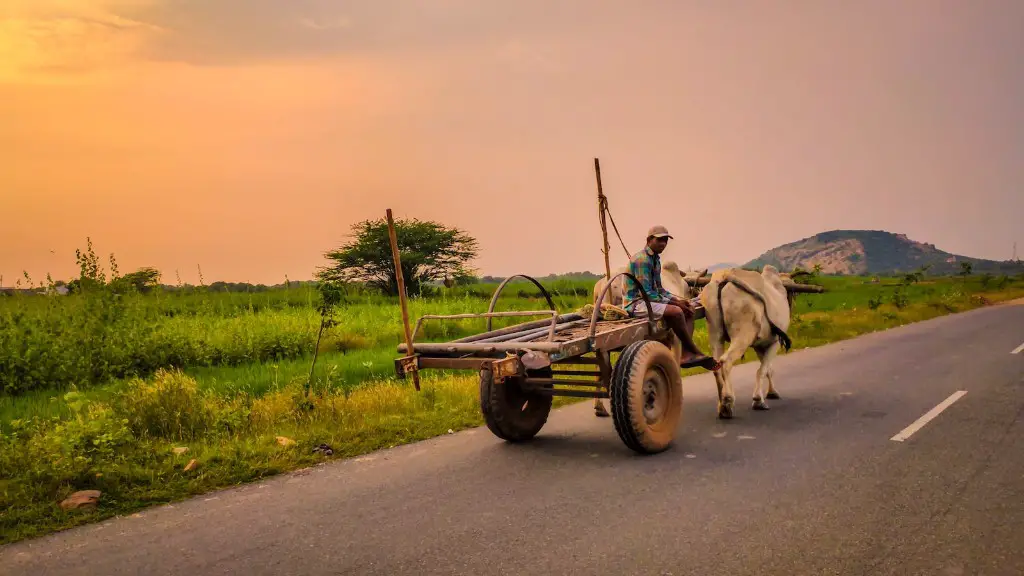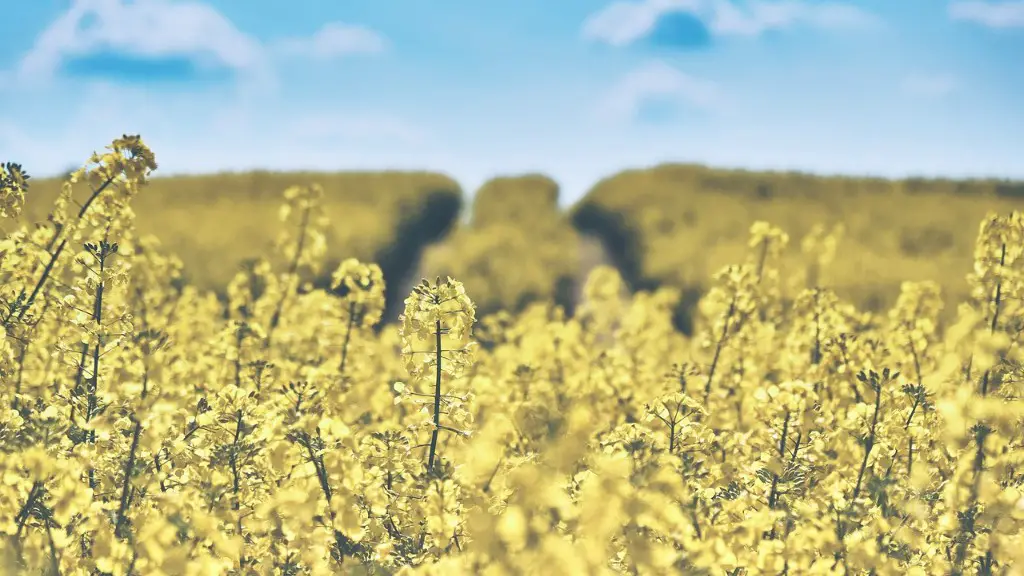Agriculture is the leading cause of deforestation, habitat destruction, and species extinction worldwide. It is also a major contributor to climate change, air pollution, water pollution, and soil degradation. These environmental impacts of agriculture are often the result of unsustainable farming practices, such as intensive livestock production, the use of synthetic fertilizers and pesticides, and mono-cropping.
Different types of agriculture can have different effects on the environment. Some types of agriculture can be harmful to the environment if they are not managed correctly. For example, if farmers overuse pesticides and herbicides, these chemicals can leach into the groundwater and contaminate it. This can lead to health problems for people and animals who drink the water. Other harmful effects of agriculture include soil erosion, which can lead to problems with water quality, and air pollution from agricultural machinery.
What are negative effects of agriculture?
The expansion of agriculture has caused massive losses in biodiversity around the world. Natural habitats have been converted to farms and pastures. Pesticides and fertilizers have polluted the environment. Soils have been degraded.
Agriculture is one of the main activities that humans undertake in order to provide food for themselves and others. It is also a significant driver of environmental change. The five main environmental effects of agriculture are soil fertility loss, eutrophication of water bodies, deforestation, climate change and pesticide pollution.
Soil fertility loss is a major environmental effect of agriculture. It occurs when the nutrients in the soil are used up faster than they can be replaced. This can happen due to intensive farming practices, such as using large amounts of chemical fertilizers. Soil fertility loss can lead to a decline in crop yields and eventually to desertification.
Eutrophication of water bodies is another environmental effect of agriculture. It occurs when agricultural runoff, containing nutrients such as nitrogen and phosphorus, enters waterways. These nutrients can cause algae and other aquatic plants to grow excessively, leading to problems such as reduced oxygen levels in the water and fish kills.
Deforestation is another environmental effect of agriculture. It occurs when trees are cleared to make way for farmland. Deforestation can lead to soil erosion, loss of biodiversity and climate change.
Climate change is another environmental effect of agriculture. Agricultural activities, such as deforestation and the use of fossil fuels, contribute to
What is the biggest problem in agriculture
The loss of agricultural land through erosion and manmade factors is one of the two large problems facing agriculture in the modern world. The other is the increasing lack of diversity in crops.
There are a number of reasons for the loss of agricultural land. One of the most significant is the conversion of agricultural land to other uses, such as urban development or industrial uses. This can lead to a loss of agricultural productivity and a decrease in the amount of land available for agriculture. Another major problem is the degradation of agricultural land, which can be caused by a number of factors, including soil erosion, pollution, and climate change. This can lead to a decline in the quality of the land and a decrease in its productivity.
What are the 5 biggest environmental problems caused by food and agriculture?
It is no secret that the agricultural industry has a significant impact on the environment. Food production requires large amounts of water, which can lead to water shortages and water pollution. In addition, the agricultural industry is a major source of greenhouse gas emissions, which contribute to climate change. Furthermore, food production can lead to the depletion of natural resources, and the agricultural industry is also a major source of environmental contaminants and pollutants.
Fortunately, there are some things that we can do to mitigate the environmental impact of food production. For example, we can support zero waste grocery stores, eco-friendly grocery stores, and plastic-free grocery stores. We can also try to consume less meat, which requires a lot of resources to produce.
There are many reasons to relocate to Canada today! Some of the reasons include the lack of modernization and mechanization in many parts of the world, illiteracy, ignorance, the lack of funds, poor infrastructure/ lack of social amenities, the absence of modern storage/processing facilities, and the loss of land to natural disasters.
What are the three main problems for agriculture?
The above-mentioned problems are commonly faced by farmers in India. In addition, the country’s agriculture is highly rain-fed, which makes it even more vulnerable to climate change. erratic rainfall patterns.
There are increasing pressures from climate change, soil erosion and biodiversity loss and from consumers’ changing tastes in food and concerns about how it is produced. And the natural world that farming works with – plants, pests and diseases – continue to pose their own challenges. Farming needs to adapt to these changes in order to be sustainable in the long-term.
Why is agriculture the biggest mistake
Farming helped bring another curse upon humanity: deep class divisions. Hunter-gatherers have little or no stored food, and no concentrated food sources, like an orchard or a herd of cows: they live off the wild plants and animals they obtain each day.
Climate change is a pressing issue and agricultural production is one area where change could result in reduced greenhouse gas emissions. Farm operators can change production practices or land use to increase the carbon stored in soil or vegetation. This would help to sequester carbon dioxide from the atmosphere and combat climate change.
How does agriculture cause global warming?
Agriculture is both a victim of and a contributor to climate change. On the one hand, agricultural activities contribute approximately 30 per cent of total greenhouse gas emissions, mainly due to the use of chemical fertilizers, pesticides and animal wastes. On the other hand, agriculture is one of the sectors most vulnerable to climate change, as extreme weather events such as floods and droughts can damage crops and livestock. Therefore, it is important for the agricultural sector to adopt practices that help to reduce emissions, while also preparing for and adapting to the effects of climate change.
The expansion of agriculture globally is putting increasing pressure on land and water resources, often resulting in land degradation (such as soil erosion and salinization) and eutrophication. Agriculture is also a major contributor to greenhouse gas emissions.
How agriculture affects your daily life
Agriculture plays a vital role in our society and economy. It provides us with food, jobs, and raw materials for many products. It also supports local economies through trade.
Agriculture is one of the biggest users of water globally, and it is also a significant contributor to greenhouse gas emissions. Agricultural expansion can also lead to deforestation and the loss of biodiversity. Therefore, it is important to consider the sustainability of our agricultural practices in order to protect our environment.
What are 2 issues facing modern agriculture?
Soil quality, water quality, climate, and terrain are just a few of the environmental issues that may impact profits and productivity for farmers in any given growing season.
Farming is a complex and delicate balance of many different factors, all of which can be impacted by the environment. Poor soil quality can lead to lower crop yields, for example, while adverse weather conditions can damage crops or make it difficult to get them to market.
It’s important for farmers to be aware of the potential environmental issues that may impact their business in any given year, and to plan accordingly. Taking steps to protect and improve the quality of their land, water, and climate can help ensure a more successful and prosperous growing season.
Agriculture plays a significant role in environmental degradation through climate change, deforestation, biodiversity loss, dead zones, genetic engineering, irrigation problems, pollutants, soil degradation, and waste. These problems result in a number of negative consequences for the environment, including reduced air and water quality, decreased biodiversity, and increased greenhouse gas emissions. In order to reduce the environmental impacts of agriculture, it is necessary to implement sustainable practices that minimize the negative impacts of farming on the environment.
Final Words
Agriculture may be the largest source of water pollution in many countries. The main culprits are animal wastes, pesticides, herbicides, and inorganic fertilizers. These substances can pollute surface water, groundwater, and soil. They can also contaminate the air.
agricultural processes are a major source of pollution in the environment. They can release harmful chemicals and compounds into the air, water, and soil. These pollutants can cause problems for human health, wildlife, and plant life. Agriculture can also contribute to climate change and loss of habitat.





